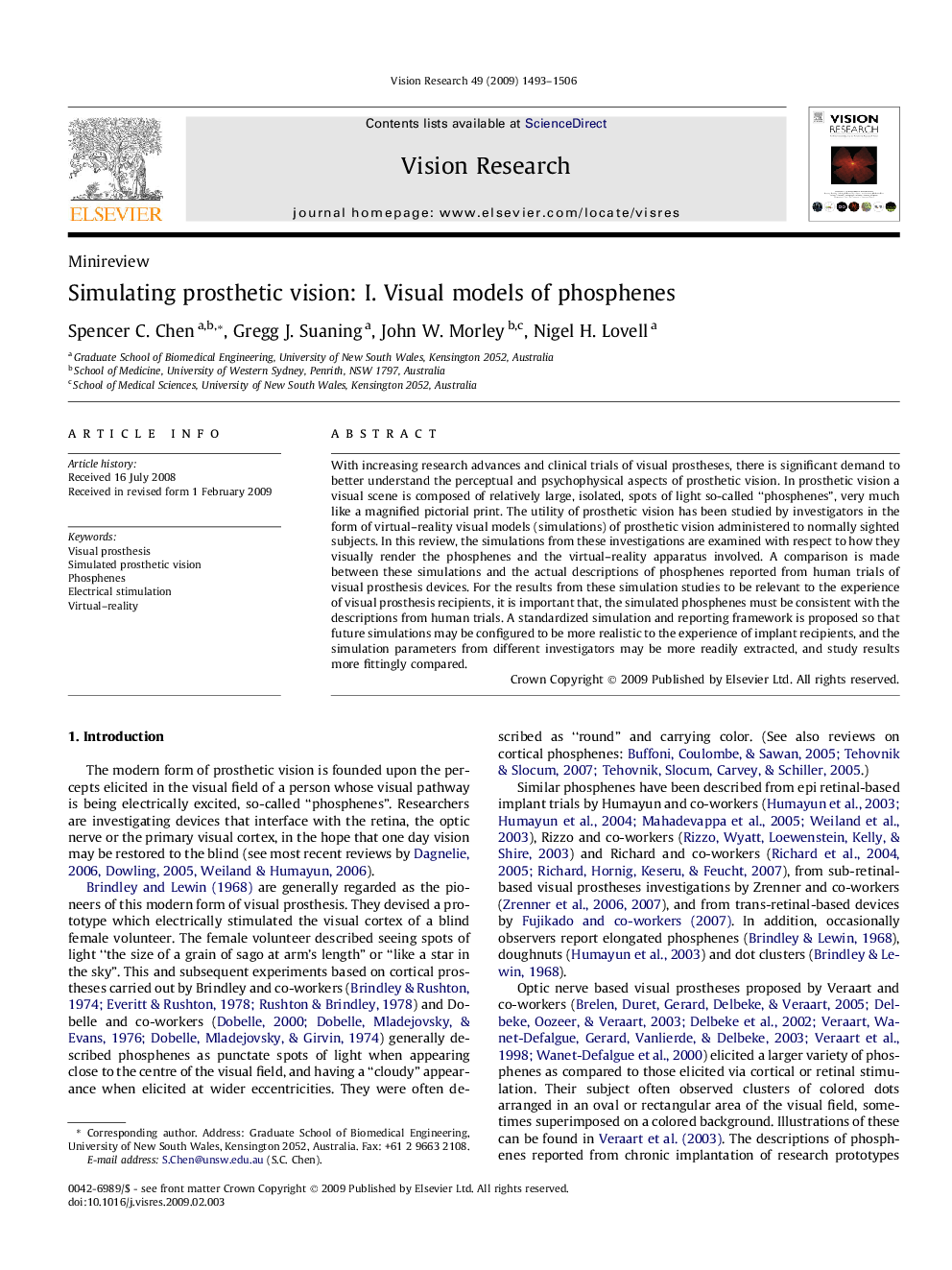| Article ID | Journal | Published Year | Pages | File Type |
|---|---|---|---|---|
| 4034777 | Vision Research | 2009 | 14 Pages |
With increasing research advances and clinical trials of visual prostheses, there is significant demand to better understand the perceptual and psychophysical aspects of prosthetic vision. In prosthetic vision a visual scene is composed of relatively large, isolated, spots of light so-called “phosphenes”, very much like a magnified pictorial print. The utility of prosthetic vision has been studied by investigators in the form of virtual–reality visual models (simulations) of prosthetic vision administered to normally sighted subjects. In this review, the simulations from these investigations are examined with respect to how they visually render the phosphenes and the virtual–reality apparatus involved. A comparison is made between these simulations and the actual descriptions of phosphenes reported from human trials of visual prosthesis devices. For the results from these simulation studies to be relevant to the experience of visual prosthesis recipients, it is important that, the simulated phosphenes must be consistent with the descriptions from human trials. A standardized simulation and reporting framework is proposed so that future simulations may be configured to be more realistic to the experience of implant recipients, and the simulation parameters from different investigators may be more readily extracted, and study results more fittingly compared.
